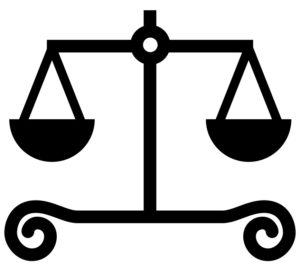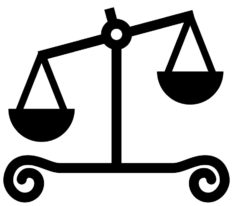This is the fourth article in an ongoing series on the principles of design. God, our Designer, used these principles in Creation and invites us to use them in our lives. Whether intentional or not, we are always creating—memories, impressions, relationships, patterns of thinking and feeling, and legacies.
Last week, we talked about the first design principle—Dominance. We asked questions such as, “How dominant is God in my own life?” This month we will be discussing the second design principle—Balance. We will be asking questions such as, “How do I maintain spiritual balance in my life?”
The word “balance” can mean many things. According to dictionaries, “balance” keeps things upright, steady, in proper or equal amounts, at equilibrium. In design, balance keeps a piece of artwork stable and comfortable because all parts are working together in some type of well-proportioned whole. We humans find symmetry and balance to be attractive and safe. When a piece of art is visually off balance, tension may result.
In Creation, God used the design principle of balance in many ways. Our bodies were designed to be balanced—symmetrical (with our left and right sides almost mirror images of each other), upright (not falling), at equilibrium (at peace). And as scientists interviewed in the godnewevidence series state, human life “is balanced on a razor’s edge” in terms of the laws of physics (such as gravity and resonance).
We also see God using balance elsewhere in Creation. For example, He balances diversity and uniformity in the universe. We humans are genetically uniform in so many ways that we are all one species. Yet we are each unique, different from each other, presumably because God values variability also. In Genesis, we see more balances—night and day, land and water, plant and animal, work and rest, male and female.
Yet we also see the tension, the imbalance in the world God allows or places in the world to keep things moving. If we did not lean forward to cause imbalance, we would never start walking. Some imbalance and some dominance are good. For example, good and evil are not in balance. God is good and has overcome the power of evil. Light has overcome darkness. At the cross, God’s mercy and wrath meet, and mercy triumphs over judgment.

What do we as Jesus-followers need to keep in balance? We need to hold equally that Jesus was fully human and fully divine. When we overemphasize Christ’s divinity, we forget that as a human, God fully suffered for us and showed us how to respond to all situations on this earth. And having been in human flesh, Christ now enters our suffering, intercedes for us, and compassionately understands us. When we overemphasize the humanity of Jesus, we forget that as God He is sovereign, victorious, and worthy of whole-hearted worship and obedience.
As believers, we also need to keep in balance love and truth, submission and authority, heart and head, faith and reason, care for self and care for others, being and doing, the good of the individual vs. the good of the whole group, and past and future (on the fulcrum of the present). What else is God inviting you to keep in balance?
As Christians, we also need to be willing to remain in tension and on the move, always growing and changing. In art, perfect symmetry and balance can be dull and uninteresting. Look at the first painting below. Then look at the second painting. Which one is more interesting to you? Do you find your eyes moving around the entire painting more as you look at the second as compared to the first?


In our own frail human lives, perfect symmetry and balance is impossible. And this is good. We want God to be dominant instead of “balancing” our love for God with our love for ourselves. Also, feeling off-balance, which happens when we suffer or when we experience the unexpected, keeps us moving, growing, and leaning into (depending on) God. Though it makes us uncomfortable, recognizing the inequalities in the world also moves us to action. God has always drawn our reluctant attention to the poor, the widow, the alien, and the orphan so that we will join Him in compassionate care for them.
Until next week, pray with the following questions: How does God want to increase your emotional, spiritual, or physical balance? How does God want you to be off-balance, in tension or on the move? And begin to consider our next principles of design—Contrast and Gradation.

